July 27th, 2010
 In the July 27th issue of Circulation, the American Heart Association made a 37 page scientific statement on interventions that produce enough activity and dietary changes in adults to lower their cardiovascular risk. One in three people in the US have cardiovascular disease and it is still our leading cause of death.
In the July 27th issue of Circulation, the American Heart Association made a 37 page scientific statement on interventions that produce enough activity and dietary changes in adults to lower their cardiovascular risk. One in three people in the US have cardiovascular disease and it is still our leading cause of death.
They looked at the results of 74 individual studies and essentially found that it requires a combination of cognitive strategies to produce lasting health-related behavior change including, counseling, goal setting, extended follow-up and self monitoring. Personalized strategies that use data and context relevant to the individual patient work best.
None of this will be a surprise to cognitive designers but it is good to have the force of a meta-study behind your approach. Plus they looked at the evidence for using specific techniques (e.g. motivational interviewing) and specific platforms (e.g. web. I am still working through the details on specific interventions and will share designable insights in later posts.

Posted in Behavior Change, Examples, Service Innovation | 2 Comments »
July 26th, 2010
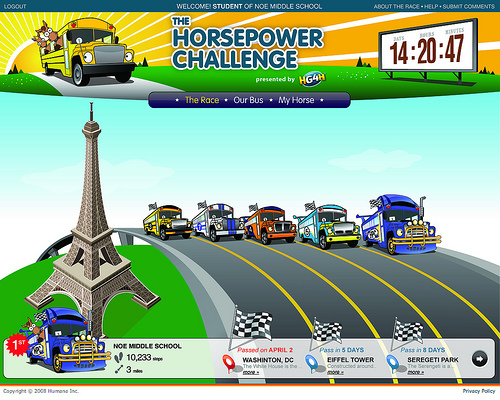
Imagine if every step you took during the day was translated via a blue tooth enable pedometer to advancing a virtual school bus in a game you and your friends were hot to win. Would you move more? Would you be more active? the answer appears to be yes, at least that is the finding from the so-called serious game called The Horsepower Challenge. Student activity increased 13% and 62% of the students claimed they exercised more because of the challenge. With 458,404,988 steps logged so far the game has scope.
How else can we use location-based games to shift the health and even financial behaviors of kids and adults?

Posted in Examples | No Comments »
July 23rd, 2010
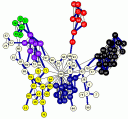 Understanding the constraints in any given context is fundamental to good design. Indeed, some define design as the ability to simultaneously satisfy multiple constraints. Design is a constraint satisfaction problem.
Understanding the constraints in any given context is fundamental to good design. Indeed, some define design as the ability to simultaneously satisfy multiple constraints. Design is a constraint satisfaction problem.
Constraints come from the client as needs and requirements, the government as rules and regulations and nature as laws and events. Some say the more constraints you have the fewer options you have as a designer. This is logical but seems to make assumptions on the limits of creativity. Perhaps we should say, the more constraints you have the more expertise and creativity you need to generate options.
Fred Brooks is a master thinker about the nature of constraints. Outside of computer science he is most famous for his book The Mythical Man-Month. In this book he reveals a fundamental constraint – after a given point, adding additional resources (e.g. people) to a task does not accelerate the work. Indeed, at some point the more you add the slower the work goes because complexity and coordination costs increase. There are many popularizations of Brook’s law – nine women cannot make a baby in a month, you cannot solve a problem by throwing money at it and so on.
 Fred Brooks continues to emphasize the importance of constraints in his new book The Design of Design. A key theme - design by discovering your scarcest resource and generate a solution that optimizes for it. You can get a taste for this in an interview he gave to Wired (August 2010 edition not yet available online):
Fred Brooks continues to emphasize the importance of constraints in his new book The Design of Design. A key theme - design by discovering your scarcest resource and generate a solution that optimizes for it. You can get a taste for this in an interview he gave to Wired (August 2010 edition not yet available online):
“The critical thing about the design process is to identify your scarcest resource. Despite what you may think, that very often is not money. For example, in a NASA moon shot, money is abundant but lightness is scarce; every ounce of weight requires tons of material below. On the design of a beach vacation home, the limitation may be your ocean-front footage. You have to make sure your whole team understands what scarce resource you’re optimizing.”
Strongly suggest wading through the 448 pages of the book to any serious student of design. Another key theme is that there are invariants across different mediums or fields of design. Identify those and we can factor in lessons across design disciplines. It is a different type of read than your typical book on design. It is written by one of our deepest design thinkers.
The idea that great designs optimize the scarcest resource has some interesting implications for understanding cognitive design. In many situations attention and more broadly mental energy will always be the scarcest resource we have. Look first the workflow between the ears for your scarcest resource.

Posted in Books, Design | No Comments »
July 21st, 2010
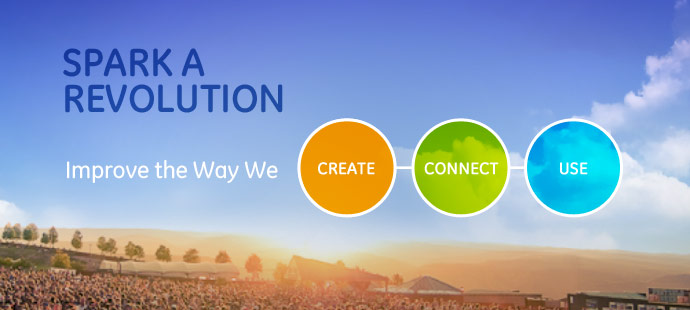
I received 10+ emails and even some phone calls on an earlier post, Cognitive Design for the Smart Grid? Lots of interesting views on how we can apply cognitive design to the mega makeover our power generation and distribution system is getting. Perhaps the most interesting feedback came from a colleague at GE that shared her firm is sponsoring a $200M ecomagination challenge to come up with ideas to improve how we create, connect and use power on the Smart Grid.
”GE’s Ecomagination Challenge is a $200 million call to action for businesses, entrepreneurs, innovators, and students to share their best ideas and come together to take on one of the world’s toughest challenges – building the next-generation power grid to meet the needs of the 21st century.”
Of the three areas (create, connect, use), use seems to be most relevant to cognitive designers:
What new technologies, processes or business models can help consumers use energy more wisely and improve our energy balance?
They are offering $50K to the idea that gets the most public votes, $100K to five ideas that illustrate innovation and entrepreneurship and the $200M to those ideas they may want to invest in to commercialize. Entries are being accepted now and must be in by September 30th.
My guess is that most of the ideas will be technology/gadget oriented. A team that is able to propose high-value service designs and consumer experiences that make the most of the emerging Smart Grid to improve the environment will really stand out. Just the stuff for ambitious cognitive designers.

Posted in Events | No Comments »
July 20th, 2010
Managers are constantly seeking ways to tap external knowledge to drive organizational performance. These include traditional methods such as advisory boards, focus groups, benchmarking and best practices as well as new fangled methods such as crowdsourcing and open innovation. Of course, the effectiveness of these methods turns on a host of cognitive factors at both the source and destination of the knowledge. So I am always on the lookout for new ways of leveraging knowledge that pay particular attention to the cognitive design issues involved.
 Take for example, McKinsey’s recent article, Using Knowledge Brokering to Improve Business Process. Content is free but you must register. The article describes a new open innovation method focused not on improving innovation but solving any strategic, operational or financial problem you might have. The method involves framing your problem in a context free way and enlisting the help of knowledge brokers in several other industries that have solved the problem. What is of special interest to cognitive designers, other than the method of framing problems in a context free manner, is the method used to access the knowledge. You do a 1-hour phone call. The knowledge broker starts with a story (10- 15 minutes) and then the team ask questions. To quote:
Take for example, McKinsey’s recent article, Using Knowledge Brokering to Improve Business Process. Content is free but you must register. The article describes a new open innovation method focused not on improving innovation but solving any strategic, operational or financial problem you might have. The method involves framing your problem in a context free way and enlisting the help of knowledge brokers in several other industries that have solved the problem. What is of special interest to cognitive designers, other than the method of framing problems in a context free manner, is the method used to access the knowledge. You do a 1-hour phone call. The knowledge broker starts with a story (10- 15 minutes) and then the team ask questions. To quote:
“ The best medium we’ve found for knowledge brokering is a one-hour telephone call. Visits in person and by video yield less useful knowledge because they subtly distract team members from the experience of listening while subconsciously encouraging them to form irrelevant value judgments based on the speaker’s appearance, expressions, and so on. A knowledge broker should start the conversation by describing experiences related to the process issue, simply by telling the story. Just 10 to 15 minutes is plenty of time to acclimatize the team.”
The knowledge broker is encouraged to challenge the team to adapt the story to their situation. For example:
“A team from a private bank, for example, wanted to steer its high-net-worth clients away from customized investments and toward portfolio-management products offering both higher returns for customers and higher profits for the bank. One of the team’s brokers was a physician who described his bedside manner, explaining that when hospital patients refuse to take their medication he overcomes the problem by engaging directly with the family. This was a breakthrough for the team, which later successfully applied the idea in its own context by developing ways to include the broader families of the bank’s clients in key financial decisions. ”
Very different cognitive interplay from the typical best practices interview or expert opinion session.

Posted in Examples | No Comments »
July 19th, 2010
For those that seek to improve organizations the metaphor of “breaking down silos” has a special place. The idea is to get things to work more smoothly across organizational boundaries without disrupting the value those boundaries provide.
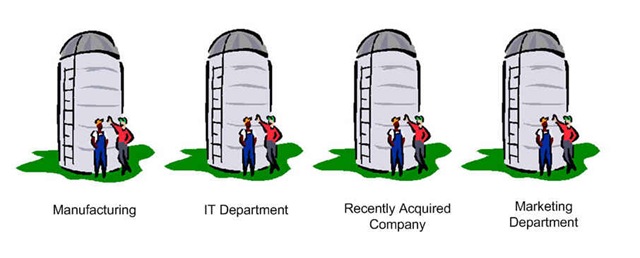
Today, we face a new kind of silo or boundary that both accelerates and impedes organizational performance. It is the boundary between the digital or online world and the physical world. We bridge these worlds with smart phones, digital cameras, PCs, tons of other gadgets and a huge range of software applications ranging from Office products and Facebook to supercomputing applications.
Integrating cyberspace with office space is one of the major issues we face in the early 21st century.
Meeting this challenge requires a boat load of cognitive design. To get your wheels turning check out Microsoft’s vision (6 minute video) for getting it done. It starts out slow but pay special attention to the features and functions that get the big burst of applause.
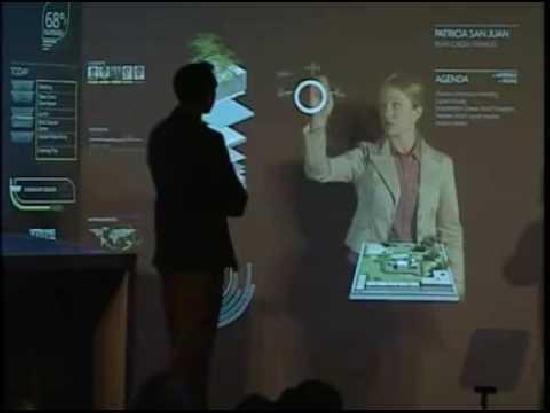

Posted in Design | 1 Comment »
July 17th, 2010
 Making decisions well when you have just been diagnosed with a serious condition is very difficult, especially in today’s healthcare system. Even making decisions to insure wellness or prevent illness can be tough. What is needed is improved patient-clinician teaching, social and emotional support systems and technology and local resources for managing information and understanding conditions. If you have solutions for meeting these cognitive design challenges you might want to enter the new Changemakers contest (sponsored by Amgen) on Patients | Choices| Empowerment. The site is open for entries now, the deadline is September 29th and the top prize is $10K and a chance to go after a much larger grant.
Making decisions well when you have just been diagnosed with a serious condition is very difficult, especially in today’s healthcare system. Even making decisions to insure wellness or prevent illness can be tough. What is needed is improved patient-clinician teaching, social and emotional support systems and technology and local resources for managing information and understanding conditions. If you have solutions for meeting these cognitive design challenges you might want to enter the new Changemakers contest (sponsored by Amgen) on Patients | Choices| Empowerment. The site is open for entries now, the deadline is September 29th and the top prize is $10K and a chance to go after a much larger grant.
Even you don’t want to enter still check out the site and review the creative ideas, leave comments and vote! Interested to hear from readers that make a submission.

Posted in Events | No Comments »
July 12th, 2010
 In cognitive design we stress understanding how our clients, think, feel, learn, emote, make decisions, perceive the world and conduct other mental business. This is true especially when the client is an infant. I say especially because in no other area has understanding of how the mind works change more radically in recent years than it has with infant cognition. To get a taste of what I mean check out How Babies Think.
In cognitive design we stress understanding how our clients, think, feel, learn, emote, make decisions, perceive the world and conduct other mental business. This is true especially when the client is an infant. I say especially because in no other area has understanding of how the mind works change more radically in recent years than it has with infant cognition. To get a taste of what I mean check out How Babies Think.
“But in the past three decades scientists have discovered that even the youngest children know more than we would ever have thought possible. Moreover, studies suggest that children learn about the world in much the same way that scientists do—by conducting experiments, analyzing statistics, and forming intuitive theories of the physical, biological and psychological realms.”
You need to register and purchase the entire issue but if you are designing anything for infants it is well worth the $5.99.

Posted in Examples | No Comments »
July 11th, 2010
 A recent article in Interacting with Computers has some interesting findings on what works when it comes to designing pleasure into our interaction with technology. Researchers studied 500 examples of pleasurable experiences with interactive technology products (e.g. mobile phone, mp3 player, etc.) and found that stimulation, relatedness (feeling of being connected with other people), competence (feeling of being skilled and knowing what you are doing) and popularity (feeling that you are respected and liked by others and can influence them) were the four dominate factors that determined pleasure during use. Adding features and functions that help us feel in touch, skilled and respected are key to creating pleasurable designs.
A recent article in Interacting with Computers has some interesting findings on what works when it comes to designing pleasure into our interaction with technology. Researchers studied 500 examples of pleasurable experiences with interactive technology products (e.g. mobile phone, mp3 player, etc.) and found that stimulation, relatedness (feeling of being connected with other people), competence (feeling of being skilled and knowing what you are doing) and popularity (feeling that you are respected and liked by others and can influence them) were the four dominate factors that determined pleasure during use. Adding features and functions that help us feel in touch, skilled and respected are key to creating pleasurable designs.

Posted in Examples | 1 Comment »
July 8th, 2010
The electric power generation and distribution system in the US is sometimes called the grid. A major makeover is in the works that includes an overlay of computers, monitoring devices and software that will make it smarter. This so-called Smart Grid is supported by the Department of Energy (DOE) and is being developed by corporate giants such as IBM and GE. It will change everything about how we use electrical energy for the better – faster, cheaper, cleaner and more reliable.
Designers are even getting into the game. Check out Frog Design is Making the Smart Grid Sexy:
”Smart energy products are still in their infancy. While plenty of tools exist to help homeowners track their power use, the majority of them don’t actively help consumers do anything about their excessive energy use. “We are in the era of awareness tech,” explains David Merkoski, Executive Creative Director at frog design. “The next era is products and services that move into behavior design.”
This is a major opportunity for cognitive designers interested in behavior change. And it is not just in the home but also business and other organizations that are looking to save money and the planet by making a smart grid investment.

Cognitive design has a key role to play because the hardware/software infrastructure or “information management overlay” needed for the Smart Grid will evolve in stages. We are a long-way off from full automation and therefore human habit and behavior change will continue to play a staring role in creating value. These behavior changes include for example shutting off lights, unplugging appliances with vampire load, putting your computer in sleep mode and adjusting temperature when you are gone or sleeping. All things we don’t have much of a personal financial incentive to do. Perhaps we can find new ways to motivate such behaviors using the “awareness tech” (mentioned above). But who is working on those designs?

Posted in Behavior Change, Design | 3 Comments »
 In the July 27th issue of Circulation, the American Heart Association made a 37 page scientific statement on interventions that produce enough activity and dietary changes in adults to lower their cardiovascular risk. One in three people in the US have cardiovascular disease and it is still our leading cause of death.
In the July 27th issue of Circulation, the American Heart Association made a 37 page scientific statement on interventions that produce enough activity and dietary changes in adults to lower their cardiovascular risk. One in three people in the US have cardiovascular disease and it is still our leading cause of death.









